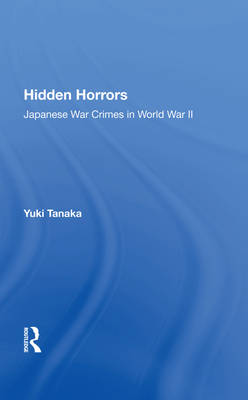
- Afhalen na 1 uur in een winkel met voorraad
- Gratis thuislevering in België vanaf € 30
- Ruim aanbod met 7 miljoen producten
- Afhalen na 1 uur in een winkel met voorraad
- Gratis thuislevering in België vanaf € 30
- Ruim aanbod met 7 miljoen producten
Zoeken
€ 195,95
+ 391 punten
Uitvoering
Omschrijving
This book documents for the first time previously hidden Japanese atrocities in World War II, including cannibalism; the slaughter and starvation of prisoners of war; the rape, enforced prostitution, and murder of noncombatants; and biological warfare experiments. The author describes how desperate Japanese soldiers consumed the flesh of their own comrades killed in fighting as well as that of Australians, Pakistanis, and Indians. Another chapter traces the fate of 65 shipwrecked Australian nurses and British soldiers who were shot or stabbed to death by Japanese soldiers. Thirty-two other nurses, who landed on another island, were captured and sent to Sumatra to become â oecomfort womenâ --prostitutes for Japanese soldiers. Tanaka recounts how thousands of Australian and British POWs died in the infamous Sandakan camp in the Borneo jungle in 1945. Those who survived were forced to endure a tortuous 160-mile march on which anyone who dropped out of line was immediately shot. Only six escapees lived to tell the tale. Based on exhaustive research in previously closed archives, this book represents a landmark analysis of Japanese war crimes. The author explores individual atrocities in their broader social, psychological, and institutional milieu and places Japanese behavior during the war in the broader context of the dehumanization of men at war--without denying individual and national responsibility.
Specificaties
Betrokkenen
- Auteur(s):
- Uitgeverij:
Inhoud
- Aantal bladzijden:
- 304
- Taal:
- Engels
Eigenschappen
- Productcode (EAN):
- 9780367010157
- Verschijningsdatum:
- 7/06/2019
- Uitvoering:
- Hardcover
- Formaat:
- Genaaid
- Afmetingen:
- 137 mm x 213 mm
- Gewicht:
- 721 g

Alleen bij Standaard Boekhandel
+ 391 punten op je klantenkaart van Standaard Boekhandel
Beoordelingen
We publiceren alleen reviews die voldoen aan de voorwaarden voor reviews. Bekijk onze voorwaarden voor reviews.











